David Trevor here, charged with composing LB’s first newsletter of 2023, and I may have made a mistake already in that header. I’ll leave it and hope it looks intentional, like those carpet weavers. Because only LB is perfect, right? And it’s not like I asked for this task in the first place.
Except I sort of did. I said that people were often inclined to celebrate having survived the holidays by looking for something to read, and that he’d often grumbled about the tendency of so many readers to lock onto his series characters and pass up some of his best work. I said he’d brought it on himself by writing more books than anyone could keep track of. (When Terry Zobeck was compiling his bibliography, A Trawl Among the Shelves, LB wanted him to call it The Man Who Wrote Too Much.)
Long story short, what I suggested was a newsletter pointing out some non-series books readers might otherwise overlook. “Great idea,” he said, surprising me, and then he surprised me again. “You do it,” he said.
Really? I asked which books to feature and he told me it was my call. He was busy, he was working, he didn’t want to think about it, but it was a terrific idea and I should get right to it. Just pick three or four books, find something nice to say about them, show their covers, and include links in case someone actually wants to buy something. And wind up with mentions of Playing Games and the new Burglar book, because what could it hurt?
There was a time a while back when he referred to me, I think in a newsletter, as “the indispensable David Trevor.” That’s a lovely modifier, “indispensable,” and I hope what follows won’t move him to drop the first syllable.
So here goes.
1. The Girl with the Deep Blue Eyes is an easy choice to lead off with, as it’s a personal favorite of mine. Hero is Doak Miller, a New York cop who retires under a cloud and winds up a private eye and fixer in a 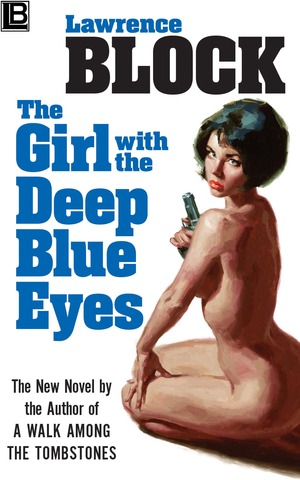 small town in central Florida. Then a job he does for the local sheriff introduces him to what LB would call the titular heroine, a married woman with a past as shady as his own. And you can take it from there.
small town in central Florida. Then a job he does for the local sheriff introduces him to what LB would call the titular heroine, a married woman with a past as shady as his own. And you can take it from there.
The book has all the drive and energy of the crime novels LB was writing for Gold Medal half a century ago, plus the depth and literary skill he developed since then. It’s sold well for Hard Case Crime, but not as well as I’d expect. The title echoes one of those early books, The Girl with the Long Green Heart, and people naturally assume it’s of the same vintage—though it was written in 2014 and published a year later. (LB’s working title was Doak Miller, he thought it would lead to people taking the book more seriously, and I think he may have been right. But that’s no title to stick on a Hard Case thriller.)
Note, too, that The Girl with the Deep Blue Eyes is intensely and specifically erotic, in a way no 1960s Gold Medal novel ever dreamed of being. And that Doak is not a very nice man—although you may well find yourself rooting for him.
2. LB has said that it was a longstanding ambition of his to write a big multiple-viewpoint novel of New York City. Before he knew anything about the book, he had a title for it, drawn from an observation of John 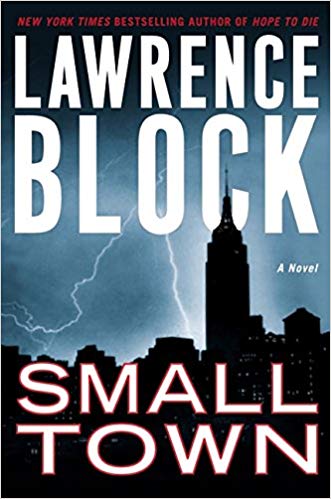 Gunther’s. He began work on Small Town in the spring of 2001, and he was around a hundred pages into it when the Twin Towers came down and the world—and especially the city—changed forever. He put his work in progress—well, no longer in progress— in a desk drawer and tried to forget about it.
Gunther’s. He began work on Small Town in the spring of 2001, and he was around a hundred pages into it when the Twin Towers came down and the world—and especially the city—changed forever. He put his work in progress—well, no longer in progress— in a desk drawer and tried to forget about it.
Then, several months down the line, he looked at what he’d written and saw a way to do it, changing its setting from a pre-9/11 New York to that same city in the ashes of the event. A whole new story emerged, and he got it all down.
HarperCollins published Small Town, and did quite well with it. But readers who have come recently to LB’s work are apt to overlook it. Some may be put off by the idea of a 9/11 novel, and it’s not that, not really. It’s a post-9/11 novel, even as its New York is a post-9/11 city.
I do know that LB got more angry reader email for Small Town than for anything he’s written before or since. The book is, um, sexually explicit, and readers who were hoping for a bubbly book about a gentleman burglar and his stub-tailed cat evidently felt betrayed. (I’ve been meaning to ask him if the memory of the book’s reception is what led him to hang the subtitle “A Novel of Sex and Violence” on Getting Off. Not that it did much good. There are one-star Amazon reviews complaining about the sex and violence in Getting Off. Like, what did they expect?)
3. LB wrote Random Walk in the summer of 1987 in the course of his first stay at a writers colony, the Virginia Center for the Creative Arts. As they once said of a Red Sox pitcher, LB wrote this “like a man with 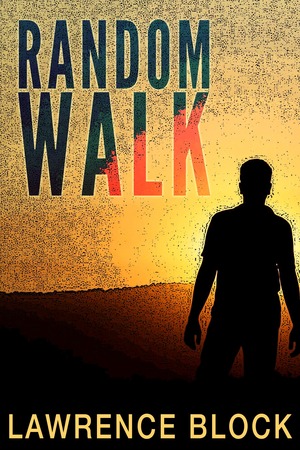 his hair on fire.” He settled in with only a vague idea of what he was going to write, and every morning he woke up knowing what he would write that day, and before four weeks were up he had a book. He insists it wasn’t really like taking down celestial dictation, but Random Walk was clearly a book that wanted to be written.
his hair on fire.” He settled in with only a vague idea of what he was going to write, and every morning he woke up knowing what he would write that day, and before four weeks were up he had a book. He insists it wasn’t really like taking down celestial dictation, but Random Walk was clearly a book that wanted to be written.
But, he says, it didn’t much want to be read. Tor published it and packaged it like science fiction, and sales were awful; of the people who read it, some loved it and the rest didn’t know what to make of it. Which is understandable, as it’s an odd book. Briefly, one man walks away from his bartending job in Oregon and starts walking east over the Cascades. And people join in, for no apparent reason, and the group begins to generate its own energy, and Remarkable Things Happen. Meanwhile, a real estate guy in Kansas kills a woman by accident and finds out to his surprise that he loves it, and can’t wait to do it again. And keeps on doing it, and keeps on loving it.
And so on. What he’s doing in the same novel with the others is just one of the book’s imponderable elements. There are people who claim to re-read Random Walk annually and swear it’s changed their lives; there are others who figure LB must have been on drugs (he wasn’t) or out of his mind (always a possibility). I’m an ardent fan myself, but your mileage may vary.
4. The Classic Crime Library is a vehicle LB dreamed up to highlight his backlist crime novels. I think it runs to twenty titles at this point, and we’ve packaged them with their early covers as an inset. I could 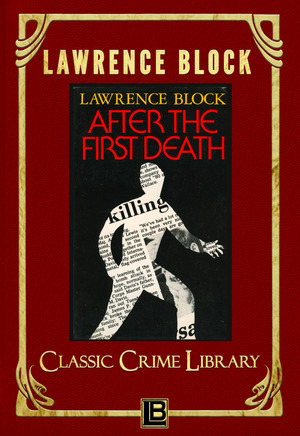 with a clear conscience recommend them all (“Collect the complete set! Win valuable prizes!”) but what I’ll do here is call the attention of Matthew Scudder fans to LB’s second hardcover book, After the First Death. (The first, also published originally by Macmillan, was Deadly Honeymoon.)
with a clear conscience recommend them all (“Collect the complete set! Win valuable prizes!”) but what I’ll do here is call the attention of Matthew Scudder fans to LB’s second hardcover book, After the First Death. (The first, also published originally by Macmillan, was Deadly Honeymoon.)
After the First Death has a hell of a first chapter. The hero wakes up in a hotel room with a killer hangover and no memory of how he got there. He was in Times Square, he was drinking, he picked up a working girl—and that’s all he remembers. Then he looks around, and there’s the girl, and she’s dead. And he says to himself, Oh, rats (or words to that effect) I’ve done it again. Because he’d killed a girl in a blackout some years back, and went to prison for it, and got out on a Miranda-type decision, and OMG what does he do now?
But a bit of memory or false memory surfaces, enough to convince him that he didn’t kill this girl, that someone else did it and framed him for it. And if that’s so, the same person must have framed him for the earlier killing—and the only way he can establish any of this is to stay away from the cops long enough to solve the crime himself.
The milieu is very much Scudder’s world, and neither the dark view or the focus on alcoholism will be unfamiliar to Scudder fans. Incidentally, if the opening seems to remind you of a Jane Fonda picture, the one you’re thinking of is The Morning After, and it came out in 1986. LB borrowed a time machine so that he could steal the idea back in 1969.
5. If you’re primarily a reader of LB’s series, well, you’re not alone. As a reader, he’d always welcomed the idea of being able to renew his acquaintance with an appealing character, and when he started writing 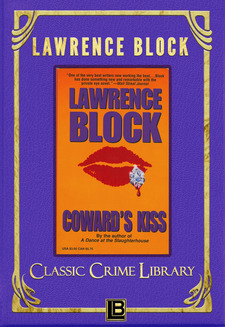 crime fiction he knew he’d want to develop series of his own. While he never wrote a second novel about Ed London, detective hero of Coward’s Kiss, he did feature the fellow in three novelettes; you can find them collected, along with his earliest pulp stories, in One-Night Stands and Lost Weekends. And he even ended Deadly Honeymoon so as to leave open the possibility of a sequel, and I think we can all be grateful he never followed through. (Not that there’s anything wrong with Deadly Honeymoon, except for the lousy movie they made from it, but no one who read that book ever clamored for an encore.)
crime fiction he knew he’d want to develop series of his own. While he never wrote a second novel about Ed London, detective hero of Coward’s Kiss, he did feature the fellow in three novelettes; you can find them collected, along with his earliest pulp stories, in One-Night Stands and Lost Weekends. And he even ended Deadly Honeymoon so as to leave open the possibility of a sequel, and I think we can all be grateful he never followed through. (Not that there’s anything wrong with Deadly Honeymoon, except for the lousy movie they made from it, but no one who read that book ever clamored for an encore.)
So what series did he write? Well, the first two you’ll think of are probably Matthew Scudder and Bernie Rhodenbarr, followed closely by Keller. And then there’s Evan Tanner, LB’s first series character, 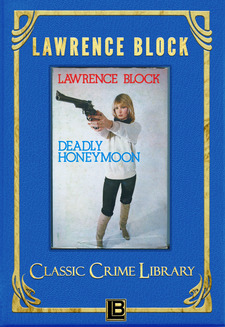 and Chip Harrison. Matthew Scudder was conceived as a series protagonist, and LB knew he was going to write at least three books before he started work on the first, The Sins of the Fathers. Each of the others developed into a series when LB finished the first book and found he had more to say about the character. (Keller started as a single short story, “Answers to Soldier,” and a couple of years passed before he showed up again in “Keller’s Therapy.”)
and Chip Harrison. Matthew Scudder was conceived as a series protagonist, and LB knew he was going to write at least three books before he started work on the first, The Sins of the Fathers. Each of the others developed into a series when LB finished the first book and found he had more to say about the character. (Keller started as a single short story, “Answers to Soldier,” and a couple of years passed before he showed up again in “Keller’s Therapy.”)
But how many books does it take to make a series? Could you have a series with only a single book? Let me answer that by recommending the series character Martin H. Ehrengraf. (The H stands for either Herod, like the king in the Bible, or Harrod, like the department store. Hard to say which.)
Ehrengraf is a criminal defense attorney who never loses a case, and in fact never seems to try one; somehow his clients always turn out to be 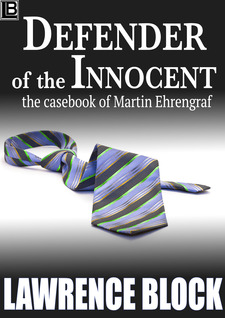 innocent—but it’s not hard to see that the dapper little man earns his high fees. There have been twelve Ehrengraf stories ever since Ellery Queen ran the first one in 1978. You can find them all in a single volume, Defender of the Innocent. There’ll never be an Ehrengraf novel, and I’d be surprised if there are any more stories to be written. The premise is kind of one-trick-pony, and I think it’s remarkable LB managed to make it work a dozen times.
innocent—but it’s not hard to see that the dapper little man earns his high fees. There have been twelve Ehrengraf stories ever since Ellery Queen ran the first one in 1978. You can find them all in a single volume, Defender of the Innocent. There’ll never be an Ehrengraf novel, and I’d be surprised if there are any more stories to be written. The premise is kind of one-trick-pony, and I think it’s remarkable LB managed to make it work a dozen times.
So that’s a series in a single volume. And I should mention (and recommend, because why not) The Specialists, which LB has specifically labeled a one-book series. He’s told the story—don’t ask me where—of how he came up with the idea of a gang of Vietnam vets and their old commanding officer, living separate lives and getting together now and then to pull a caper and right wrongs in the process. (And if this sounds like The A-Team, well, 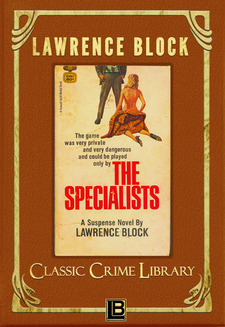 as with After the First Death vs. The Morning After, this is yet another case of LB committing arrant plagiarism via that borrowed time machine.)
as with After the First Death vs. The Morning After, this is yet another case of LB committing arrant plagiarism via that borrowed time machine.)
LB wrote The Specialists as the first volume of a series, and when his agent asked when he’d deliver the second, he said probably never. The book, he said, was very much the kind he liked to read, but it turned out it wasn’t the kind he liked to write. Huh? I’m not sure I get it either, but that’s where he left it. It’s a one-book series, and if you like it, well, don’t hold your breath waiting for a sequel.
I was going to pick out a book or two from the Collection of Classic Erotica, and one of the Jill Emerson titles as well, but I think that’s enough. More than enough? Probably.
Esp. since I’m supposed to save room to say something nice about the new anthology and the new Burglar book.
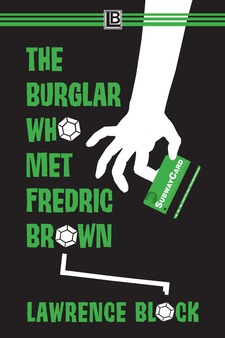 The new Bernie Rhodenbarr is very new in that LB finished writing it around the end of April, but it’s not that new in that it’s been on sale since mid-October. It’s The Burglar Who Met Fredric Brown, as you probably know, and the ebook and paperback editions are selling well and getting a lot of attention. I’d say I think it’s one of the best books in the series, but why should you care what I think? If you’re a Bernie Rhodenbarr fan you’ll want to see for yourself, and if not, well, I can’t see how my enthusiasm would make you reach for your wallet.
The new Bernie Rhodenbarr is very new in that LB finished writing it around the end of April, but it’s not that new in that it’s been on sale since mid-October. It’s The Burglar Who Met Fredric Brown, as you probably know, and the ebook and paperback editions are selling well and getting a lot of attention. I’d say I think it’s one of the best books in the series, but why should you care what I think? If you’re a Bernie Rhodenbarr fan you’ll want to see for yourself, and if not, well, I can’t see how my enthusiasm would make you reach for your wallet.
If he bothers to read that paragraph he’ll make me rewrite it.
Never mind. The anthology is Playing Games, and I took a break midway through this newsletter to upload it, so the ebook is now available for pre-order on most online platforms. The release date is 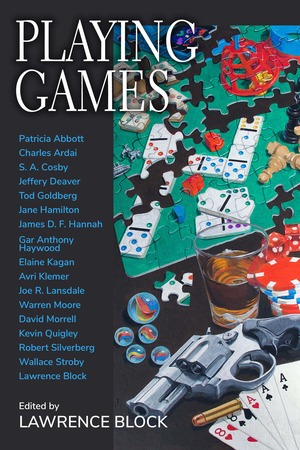 January 31, at which time the paperback will also go on sale, even as Subterranean will be shipping their limited hardcover edition. The anthology got a starred review from Publisher Weekly, which you can read at the bottom of the online book description at any of these sites: Amazon Barnes & Noble Kobo Apple Vivlio Thalia Smashwords
January 31, at which time the paperback will also go on sale, even as Subterranean will be shipping their limited hardcover edition. The anthology got a starred review from Publisher Weekly, which you can read at the bottom of the online book description at any of these sites: Amazon Barnes & Noble Kobo Apple Vivlio Thalia Smashwords
I think of Playing Games as akin to Collectibles. In both cases, LB came up with a unifying subject that sparked a lot of ideas and led to a batch of stories that managed to belong in the same book with no loss of individuality. Once again, the lineup mixes Big Names (David Morrell, Jane Hamilton, Jeffery Deaver, Joe R. Lansdale) with Rising Stars (Avri Klemer, James D. F. Hannah, Kevin Quigley). If I had to pick a favorite, it’d be “Lightning Round,” Warren Moore’s take on barroom trivia.
What else? Well, Luigi Garlaschelli came through with his translation of the fourth Scudder novel, A Stab in the Dark, and we’ve published it 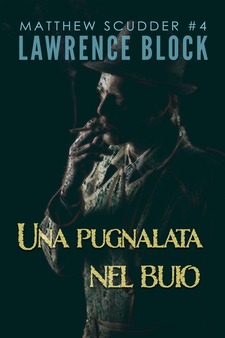 in ebook and paperback as Una Pugnalata nel Buio. (That’s not to be confused with Aspettando il Buio, Luigi’s translation of A Time to Scatter Stones. I guess “buio” is a hard word to avoid in il mondo di Scudder.)
in ebook and paperback as Una Pugnalata nel Buio. (That’s not to be confused with Aspettando il Buio, Luigi’s translation of A Time to Scatter Stones. I guess “buio” is a hard word to avoid in il mondo di Scudder.)
We may have mentioned this before, but we’ve set the release date for The Autobiography of Matthew Scudder. It’ll be on LB’s birthday, June 24. Sometime between now and then the book will be preorderable. And yes, we’ll let you know.
What else? Well, I won’t pretend the hardcover editions of the Jill Emerson novels have been setting sales records, but LB’s sufficiently encouraged by their performance—and their production quality—to plan on extending the same treatment (called Case Laminate or Library Binding) to the titles in our Classic Crime Library. Again, when they’re up and ready to go, we’ll get word to you.
And that’s more than I planned on writing. Way more, and saying so just makes it longer. So I’ll stop, and close by telling you that LB joins me in wishing you a truly wonderful year.
So I remain, indispensably yours,
David Trevor
for

PS: As always, please feel free to forward this to anyone you think might find it of interest. And, if you yourself have received the newsletter from a friend and would like your own subscription, that’s easily arranged; an email to lawbloc@gmail.com with LB’s Newsletter in the subject line will get the job done.
LB’s Blog and Website
LB’s Facebook Page
Twitter: @LawrenceBlock

I would strongly recommend the audiobook version of THE GIRL WITH THE DEEP BLUE EYES.
I understand the narrator does a rmarkable job!
That’s the word on the street.
I’ve been a Lawrence Block fan for over 50 years and the Bernie Rhodenbarr series has always been one of my favorites. I enjoyed the latest so much it sent me down a rabbit hole of reading Fredric Brown and some other sf and mystery writers. Added quite a bit to my TBR list as does this newsletter.
Darn it, David. How am I supposed to make a choice??? I have to save some time for sleep, you know.
Best wishes to you and the one and only LB. May he forever keep writing.
Just finished The Girl with the Long Green Heart! If you like grift, you like this.